#King Kalākaua of Hawaii
Note
Have you ever been to the Palace Hotel where Harding died?
I have! I've never stayed there, but I've been there several times while in San Francisco, and even if President Harding hadn't died there, it would still be a place with an amazing history.
It was actually pretty much destroyed in the 1906 earthquake and rebuilt afterwards. It was the site of many Presidential visits both before and after the death of Harding. Ulysses S. Grant stayed at the Palace Hotel after he left office and William McKinley stayed there a few months before he was assassinated in 1901. The last King of Hawaii, King Kalākaua, died while staying at the original Palace Hotel in 1891.
Here's a photo of the original Palace Hotel (which was demolished after the 1906 San Francisco earthquake) when President McKinley stayed there in 1901:
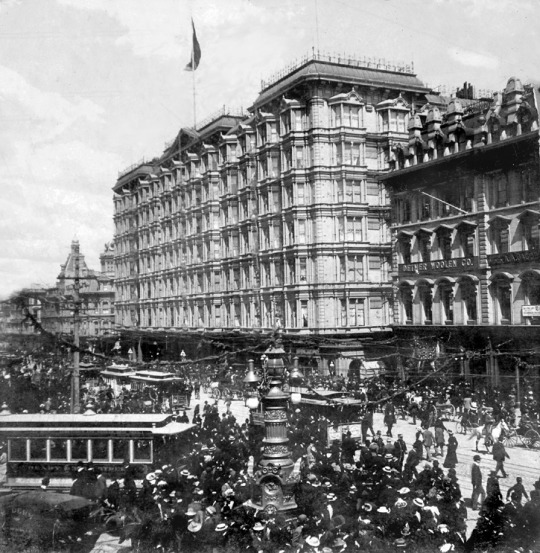
This is pretty much what the hotel would have looked like to President Harding and his party when they arrived for their visit in 1923:
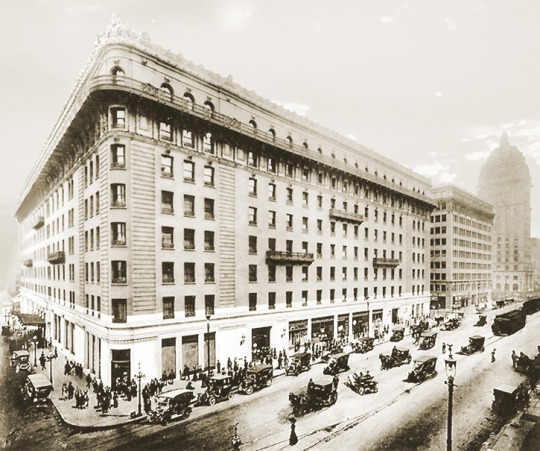
And this is what the Palace Hotel looks like if you visit it in San Francisco 100 years later:

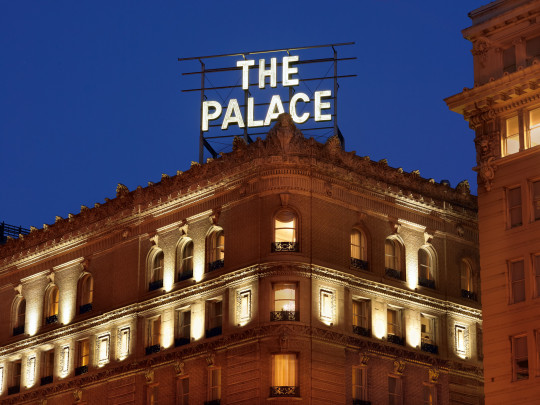
#History#Palace Hotel#San Francisco#Warren G. Harding#President Harding#Presidents#Harding Administration#Death of Warren G. Harding#California#Presidential History#Harding Death Centennial#100 Years Ago#Centennial#100 Years#SF#Palace Hotel San Francisco#1906 San Francisco Earthquake#Ulysses S. Grant#William McKinley#King Kalākaua of Hawaii#King Kalākaua#SF History#San Francisco History#California History
10 notes
·
View notes
Text
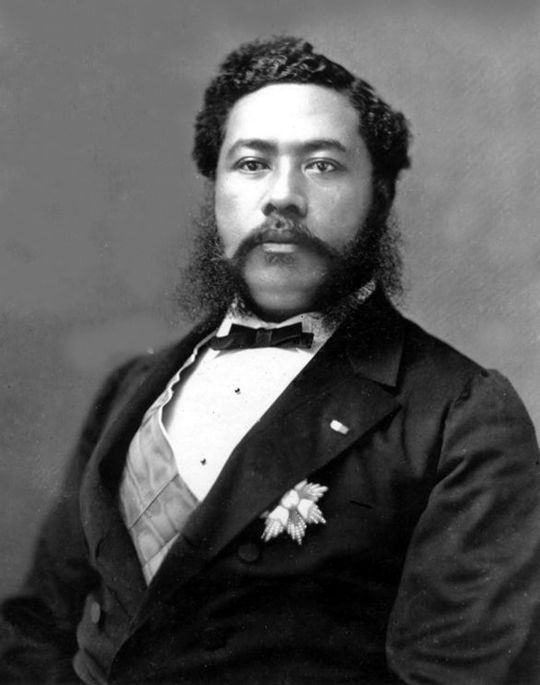
#David Kalākaua#King of Hawaii from 1874 to 1891. During his reign#his nation prospered#but prominent American residents started the process that climaxed in the 1893 coup d'état#ending Hawaiian sovereignty in favor of a United States takeover.#L0st_in_the_Stars#oldschool
13 notes
·
View notes
Text

#‘ahu ‘ula#feather cape#King David Kalākaua#Kingdom of Hawaii#Native Hawaii#Native Hawaiian#American Art Museum#Smithsonian#Washington DC
0 notes
Text
National Ukulele Day
Not only is it Groundhog Day but it is also National Ukulele Day!
The ukulele is a four-stringed instrument that has its origins in Portugal, but was adapted by Hawaiians in the 19th Century. Its size can vary, with the larger instruments producing deeper tones.
The ukulele became particularly popular in Hawaii during the reign of King Kalākaua, who incorporated the instrument into performances…
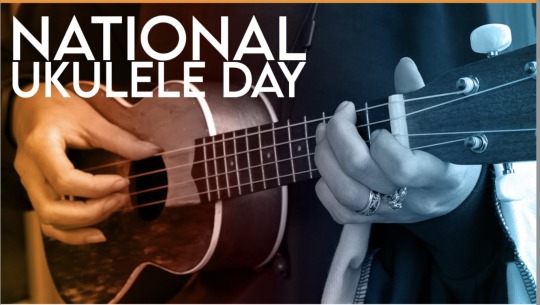
View On WordPress
1 note
·
View note
Text
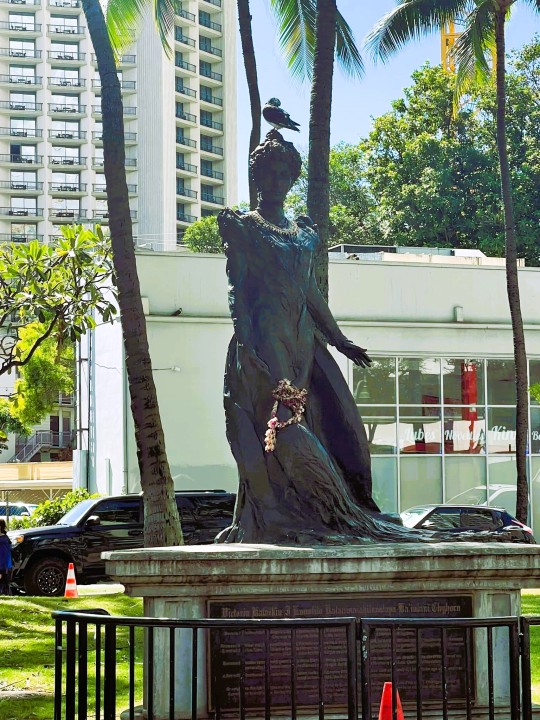
Princess Kaʻiulani Shrine, Honolulu, Hawaii: Kaʻiulani (October 16, 1875 – March 6, 1899) was the only child of Princess Miriam Likelike, and the last heir apparent to the throne of the Hawaiian Kingdom. She was the niece of King Kalākaua and Queen Liliʻuokalani. After the death of her mother, Princess Kaʻiulani was sent to Europe at age 13 to complete her education under the guardianship of British businessman and Hawaiian sugar investor Theo H. Davies. Wikipedia
71 notes
·
View notes
Text
Daily Instrument — Ukulele
The ukulele is a Hawaiian lute instrument originating in Portugal. The Ukulele has a small guitar-like body and four nylon strings. It’s played either with thumbs or fingertips. The ukulele was brought to Hawaii by Portuguese immigrants and then popularized by King Kalākaua who promoted the instrument.
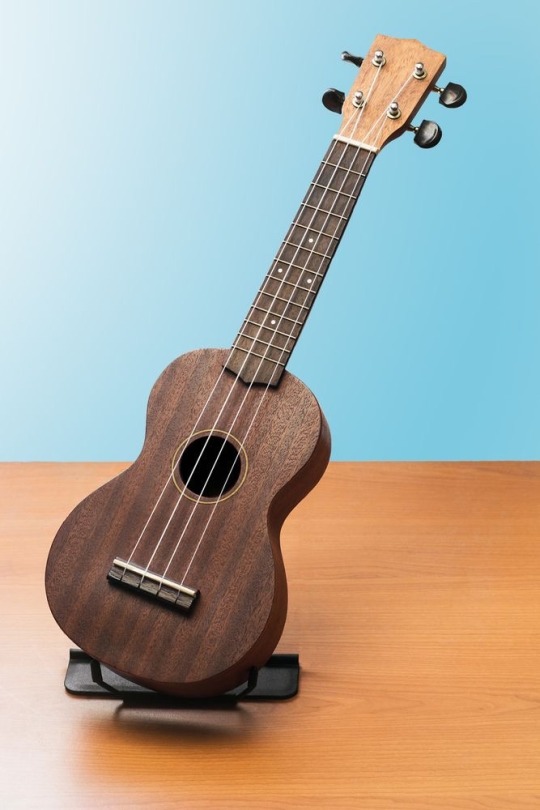
youtube
6 notes
·
View notes
Text
KE AUPUNI UPDATE - DECEMBER 2023
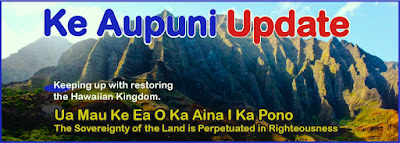
Another Pearl Harbor?
Yesterday, December 7, was the 82nd anniversary of Japanʻs devastating attack on the US military bases on Oʻahu. Remember, it was not an attack on Hawaiʻi or the Hawaiian people. It was an attack on the US military bases.
The attack plunged America into World War II and Hawaiʻi served as the forward staging platform for the military operations of US and its allies throughout the Pacific and Asia — fighting WWII, the Korean War, the Vietnam/Laos/Cambodia War and the Cold War. Hawaiʻi is America’s sugar-coated fortress; the HQ for the Indo-Pacific Command projecting US might and will over half the globe.
The US militarization of Hawaiʻi started in the late 1800s with the US Department of War greedily eyeing Puʻuloa (Pearl Harbor) for a US naval base to expand American enterprise and power in the Pacific. But the Hawaiian Kingdom was a sovereign, neutral country, and King Kalākaua refused to let a foreign navy operate a base at Puʻuloa. Queen Liliʻuokalani likewise refused.
A Conspiracy
On January 16, 1893, a company of fully armed US troops landed in Honolulu to support 13 greedy, disgruntled, white businessmen, to overthrow Liliʻuokalani and the Hawaiian Kingdom government. For its pivotal role as the muscle in the coup, the US Navy got the use of Pearl Harbor.
Then, three years later, under cover of the Spanish-American war, and claiming “military necessity” (but driven by Manifest Destiny, a.k.a. US white supremacy), the conspirators execute a quasi-annexation of the Hawaiian Islands, the US takes possession, then launches a sixty-year pro-America indoctrination campaign, culminating in 1959 with Hawaiʻi becoming the the 50th State of the United States.
The Awakening
Hawaiʻi’s cultural revival of the 1960s gave rise in the 1970s to serious questions concerning the US military’s presence in Hawaiʻi: Why was so much of our ancestral lands controlled by the US military, and off-limits to Hawaiians? Why were they still bombing, shelling and strafing Kahoʻolawe? Why were they still conducting live-fire training on our ʻāina? Why is the US military allowed to destroy, contaminate and poison our land and water, stockpile vast amounts of weapons of mass destruction and occupy some of our best lands with impunity?
Because it could. Very few questioned or opposed the United States’ presence in Hawaiʻi, including its military presence. After all, the US was here to protect us.
This allowed America to do what it wanted to do, regardless of the harm it caused to the people and the lands. The US militaryʻs obligatory “public notices”, “briefings”, “community input” and “consultations” were a complete sham.
The Biggest Threat
Today, because of the US militaryʻs reckless presence in our islands, our very lives are in danger. Fortunately, the most urgent, immediate threat — the contamination of Oʻahuʻs drinking water by the US Navy’s giant leaking fuel tanks in Kapukaki (Red Hill) — due to public outcry and massive political pressure — is being remedied. Itʻs a good start.
But, the other far more serious threat is another “Pearl Harbor”. Only this time, it would entail nuclear missile attacks on all the US military installations spread across the island. The devastation from such an attack will make all of Oʻahu look like Pearl Harbor on December 8th. Or like Lāhainā after the fire, but with almost no one of the nearly million people who live on Oahu surviving.
The US Military in Hawaii does not make us safe, it puts us in harm’s way, at risk of annihilation. To the US, Hawaii and its people are expendable collateral damage.
This is why it is urgent to do all we can to Free Hawaii and remove this clear and present danger before it is too late.
“Love of country is deep-seated in the breast of every Hawaiian, whatever his station.” — Queen Liliʻuokalani
----------
Ua mau ke ea o ka ʻāina i ka pono. The sovereignty of the land is perpetuated in righteousness.
------
For the latest news and developments about our progress at the United Nations in both New York and Geneva, tune in to Free Hawaii News at 6 PM the first Friday of each month on ʻŌlelo Television, Channel 53.
------
"And remember, for the latest updates and information about the Hawaiian Kingdom check out the twice-a-month Ke Aupuni Updates published online on Facebook and other social media."
PLEASE KŌKUA…
Your kōkua, large or small, is vital to this effort...
To contribute, go to:
• GoFundMe – CAMPAIGN TO FREE HAWAII
• PayPal – use account email: [email protected]
• Other – To contribute in other ways (airline miles, travel vouchers, volunteer services, etc...) email us at: [email protected]
“FREE HAWAII” T-SHIRTS - etc.
Check out the great FREE HAWAII products you can purchase at...
http://www.robkajiwara.com/store/c8/free_hawaii_products
All proceeds are used to help the cause. MAHALO!
Malama Pono,
Leon Siu
Hawaiian National
2 notes
·
View notes
Text
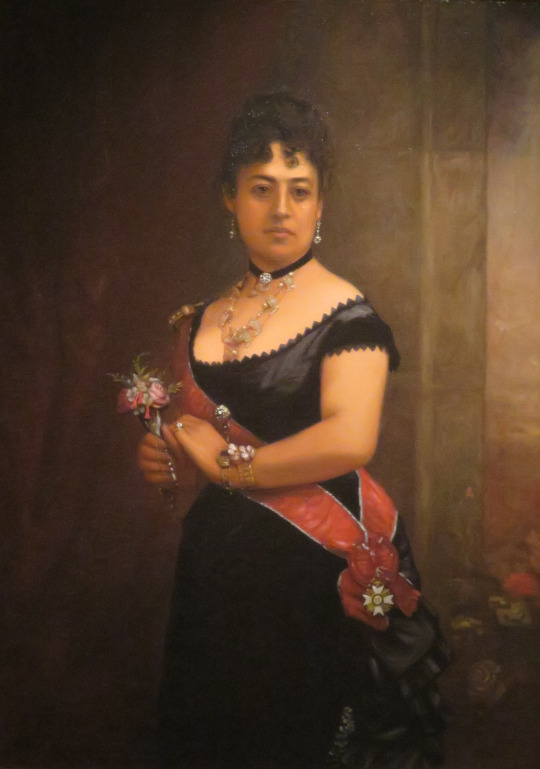
Emma Kalanikaumakaʻamano Kaleleonālani Naʻea Rooke (January 2, 1836 – April 25, 1885) was queen of Hawaii as the wife of King Kamehameha IV from 1856 to his death in 1863. She was later a candidate for the throne but King Kalākaua was elected instead.
4 notes
·
View notes
Text
The Origins and Evolution of Hula Dance
The origins and evolution of Hula Dance Hawaii are deeply intertwined with the history, spirituality, and cultural expression of the Hawaiian people. Hula is much more than just a dance; it's a living narrative that weaves together the stories, traditions, and values of Hawaii. Let's explore the journey of hula from its ancient roots to its modern-day expressions.
Ancient Origins
Hula originated in the Hawaiian Islands, with its origins shrouded in mythology and oral histories. According to one Hawaiian legend, the goddess Hiʻiaka, sister to the volcano goddess Pele, is credited with creating the first dance to appease her sister. Another legend credits Laka, the goddess of hula, with its creation. Regardless of its divine origins, hula was initially a form of worship performed in heiau (temples) or before altars dedicated to Hawaiian gods.
Early Hula
In ancient times, hula served multiple purposes: it was a way to honor gods, to record and convey history and genealogy, and to celebrate nature, fertility, and warfare. The dance was accompanied by oli (chants) and mele (songs), with dancers adorned in symbolic attire made from natural materials like leaves, feathers, and bark. This form of hula, known as Hula Kahiko, is characterized by its rigorous discipline and spiritual underpinnings.
Contact with the Western World
The arrival of Captain James Cook in 1778 marked the beginning of significant changes for the Hawaiian Islands and for hula. With the influx of missionaries in the 1820s, hula faced severe repression, as it was seen as pagan or immoral by Christian standards. However, King David Kalākaua, known as the "Merrie Monarch," played a crucial role in the revival of hula in the late 19th century, promoting it as a proud component of Hawaiian heritage and encouraging public performances.
Hula ʻAuana: The Evolution
Hula ʻAuana emerged in the late 19th and early 20th centuries, evolving in response to Western influences and the changing cultural landscape of Hawaii. Unlike Hula Kahiko, Hula ʻAuana incorporates modern musical instruments like the ukulele and guitar and features more fluid, expressive movements. This style of hula is often more accessible to broader audiences, telling stories of love, nature, and daily life in Hawaii.
Modern Hula
Today, hula is a vibrant part of Hawaiian culture, celebrated worldwide. It continues to evolve, embracing both traditional and contemporary influences while maintaining its roots in Hawaiian history and spirituality. Hula schools (hālau hula) and festivals, such as the renowned Merrie Monarch Festival, play a vital role in preserving and perpetuating hula traditions. Through these institutions, generations of Hawaiians and hula enthusiasts from all over the world learn not only the dance but also the Hawaiian language, chants, and cultural values embedded within it.
The Global Influence of Hula
As hula has spread globally, it has also adapted, blending with other dance forms and cultural expressions while retaining its unique identity. This global interest has sparked conversations about cultural appropriation, emphasizing the importance of respecting and understanding hula's deep cultural significance.
The evolution of hula dance from its ancient origins to its modern expressions is a testament to the resilience and adaptability of Hawaiian culture. Hula is not just a dance; it is a celebration of life, a preservation of history, and a bridge connecting past to present and future. Through hula, the stories, traditions, and spirit of Hawaii continue to enchant and enlighten the world.
0 notes
Text
Events before 1900 7.6
371 BC – The Battle of Leuctra shatters Sparta's reputation of military invincibility.
640 – Battle of Heliopolis: The Muslim Arab army under 'Amr ibn al-'As defeat the Byzantine forces near Heliopolis (Egypt).
1253 – Mindaugas is crowned King of Lithuania.
1348 – Pope Clement VI issues a papal bull protecting the Jews accused of having caused the Black Death.
1411 – Ming China's Admiral Zheng He returns to Nanjing after the third treasure voyage and presents the Sinhalese king, captured during the Ming–Kotte War, to the Yongle Emperor.
1415 – Jan Hus is condemned by the assembly of the council in the Konstanz Cathedral as a heretic and sentenced to be burned at the stake.
1438 – A temporary compromise between the rebellious Transylvanian peasants and the noblemen is signed in Kolozsmonostor Abbey.
1483 – Richard III and Anne Neville are crowned King and Queen of England.
1484 – Portuguese sea captain Diogo Cão finds the mouth of the Congo River.
1495 – First Italian War: Battle of Fornovo: Charles VIII defeats the Holy League.
1536 – The explorer Jacques Cartier lands at St. Malo at the end of his second expedition to North America. He returns with none of the gold he expected to find.
1557 – King Philip II of Spain, consort of Queen Mary I of England, sets out from Dover to war with France, which eventually resulted in the loss of the city of Calais, the last English possession on the continent, and Mary I never seeing her husband again.
1560 – The Treaty of Edinburgh is signed by Scotland and England.
1573 – Córdoba, Argentina, is founded by Jerónimo Luis de Cabrera.
1573 – French Wars of Religion: Siege of La Rochelle ends.
1614 – Raid on Żejtun: The south east of Malta, and the town of Żejtun, suffer a raid from Ottoman forces. This was the last unsuccessful attempt by the Ottomans to conquer the island of Malta.
1630 – Thirty Years' War: Four thousand Swedish troops under Gustavus Adolphus land in Pomerania, Germany.
1685 – Battle of Sedgemoor: Last battle of the Monmouth Rebellion. Troops of King James II defeat troops of James Scott, 1st Duke of Monmouth.
1751 – Pope Benedict XIV suppresses the Patriarchate of Aquileia and establishes from its territory the Archdiocese of Udine and Gorizia.
1777 – American Revolutionary War: Siege of Fort Ticonderoga: After a bombardment by British artillery under General John Burgoyne, American forces retreat from Fort Ticonderoga, New York.
1779 – Battle of Grenada: The French defeat British naval forces in the Caribbean during the American Revolutionary War.
1791 – At Padua, the Emperor Leopold II calls on the monarchs of Europe to join him in demanding the king of France Louis XVI's freedom.
1801 – First Battle of Algeciras: Outnumbered French Navy ships defeat the Royal Navy in the fortified Spanish port of Algeciras.
1809 – The second day of the Battle of Wagram; France defeats the Austrian army in the largest battle to date of the Napoleonic Wars.
1854 – The Republican Party of the United States held its first convention in Jackson, Michigan.
1885 – Louis Pasteur successfully tests his vaccine against rabies on Joseph Meister, a boy who was bitten by a rabid dog.
1887 – David Kalākaua, monarch of the Kingdom of Hawaii, is forced to sign the Bayonet Constitution, which transfers much of the king's authority to the Legislature of the Kingdom of Hawaii.
1892 – Three thousand eight hundred striking steelworkers engage in a day-long battle with Pinkerton agents during the Homestead Strike, leaving ten dead and dozens wounded.
0 notes
Text
I'm bored so here's the English translation of "he mele no lilo" cause I understand it (can barely speak hawaiian though) and I'm bored
Lili'ulani ruler of the land
Greatly admired is her Majesty the Chiefess of Hawaiʻi
The divine wohi ruler to the throne
The arches of rainbows, beams of colors unequalled
Creations of love
Passing along within gentle rains
Look to the brightness of day
From the vastness of Hawaiʻi to kauaʻi
In the heavens brightness
The beauty is revealed
Kalākaua is his name
A flower that never fades in the sun
It blooms on the summit
On the mountain, Mauna Kea
Burning bright at Kīlauea
Illuminating Wahinekapu
Upon the heights of Uwēkahuna
Is the sacred cliff of Kaʻauea
Come forth king of bird catchers
Adorned with the plumage of the mamo
He is the beautiful flower of Hawaii
Kalākaua is his name
Kalākaua is his name
A flower that never fades in the sun
It blooms on the summit
On the mountain Mauna Kea
Burning bright at Kīlauea
Illuminating Wahinekapu
Upon the heights of Uwēkahuna
Is the sacred cliff of Kaʻauea
Greatly admired is her Majesty the Chiefess of Hawaii
Lili'ulani ruler of the land, the divine wohi ruler to the throne
Come forth the king of bird catchers
Adorned with the plumage of the mamo
He is the beautiful flower of hawaiʻi
Kalākaua is his name
A name song for the Chief Kalākaua
0 notes
Text
The 10 Best Music Festivals In Hawaii
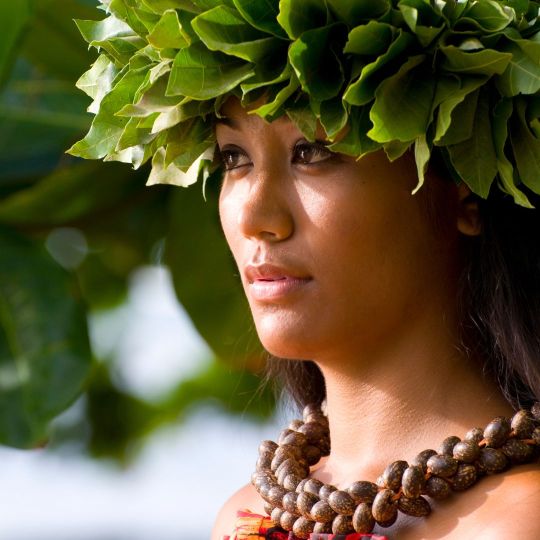
This list of the best music festivals in Hawaii used to be much longer, about 4-5 more festivals in fact. Here are the ones that have lasted through Covid and I hope the others come back stronger than ever.
If you want to take some Hawaiian music with you wherever you are in the world here are some of my favorites.
Merrie Monarch Festival

The Merrie Monarch Festival is a week-long cultural event dedicated to the celebration and perpetuation of Hawaiian culture, specifically focusing on the art of hula. Established in 1963, the festival was named in honor of King David Kalākaua, known as the "Merrie Monarch" for his love and support of Hawaiian arts, music, and culture. The festival takes place annually in Hilo on the Big Island of Hawaii.
The event comprises various activities, including hula competitions, a parade, and arts and crafts exhibitions. The hula competition is the highlight of the festival, featuring both kahiko (traditional) and ʻauana (modern) hula styles performed by soloists and groups from various hālau hula (hula schools).
While it is challenging to pinpoint specific "notable artists" as the festival highlights the hālau hula and their kumu hula (hula teachers) rather than individual dancers, many renowned hālau hula and their kumu have participated in the event over the years, such as Hālau o Kekuhi, Hālau Hula Olana, and Hālau I Ka Wēkiu.
The Merrie Monarch Festival typically takes place during the week following Easter Sunday. The exact dates and the lineup of participating hālau hula will be announced closer to the event on the festival's official website and social media channels. Be sure to check for updates to plan your visit and immerse yourself in this authentic and vibrant celebration of Hawaiian culture.
Merrie Monarch Festival
Hawaii Internation Music Festival

Photo courtesy of Hawaii Music Festival
The Hawaii International Music Festival is a celebration of music that takes place annually in the beautiful Hawaiian Islands. It brings together talented musicians and performers from around the world for a series of concerts, workshops, and cultural exchanges. The festival started in 2016, founded by a group of musicians including Eric Silberger, Amy Shoremount-Obra, and Iggy Jang, with the aim of promoting cross-cultural understanding through the power of music.
Over the years, the Hawaii International Music Festival has attracted numerous notable artists and ensembles from various genres, such as classical, jazz, and world music.
Some of these prominent artists have included the Shanghai String Quartet, ukulele virtuoso Jake Shimabukuro, jazz pianist Keiko Matsui, and Grammy-winning classical guitarist Jason Vieaux.
The Hawaii International Music Festival is scheduled around August of each year. Exact dates and the lineup of artists will be announced closer to the event on the festival's official website and social media channels. Be sure to check for updates to plan your visit and enjoy this unique cultural experience in the stunning backdrop of Hawaii.
Hawaii International Music Festival
Aloha Festivals

The Aloha Festivals is an annual series of events celebrating Hawaiian culture, music, dance, and history. It began in 1946 as "Aloha Week" and has since evolved into a month-long celebration held primarily in September. The festivals take place throughout the Hawaiian Islands, with the most prominent events happening in Honolulu, Oahu.
The Aloha Festivals feature various activities, including parades, street parties, hula performances, and concerts. The events showcase the diverse cultural traditions of Hawaii, promoting unity and harmony among the people.
Over the years, many notable Hawaiian musicians and performers have participated in the festivals, such as Israel Kamakawiwo'ole, Don Ho, Gabby Pahinui, and the Brothers Cazimero.
Exact dates and the lineup of artists and events will be announced closer to the festival on the official website and social media channels. Be sure to check for updates to plan your visit and enjoy the rich cultural experience offered by the Aloha Festivals, embracing the spirit of Aloha and the unique traditions of Hawaii.
Aloha Festivals
Ukulele Festival Hawaii

The Ukulele Festival Hawaii is an annual event celebrating the ukulele, a popular and iconic musical instrument in Hawaiian culture. Founded by Roy Sakuma and his wife Kathy in 1971, the festival aims to showcase the versatility of the ukulele and promote its music by gathering ukulele enthusiasts, performers, and artists from around the world.
Throughout its history, the Ukulele Festival Hawaii has featured numerous notable artists and performers, including Jake Shimabukuro, Herb Ohta (also known as Ohta-San), James Hill, Taimane Gardner, and Aldrine Guerrero. The event typically includes workshops, jam sessions, and concerts where both amateur and professional musicians can share their love for the ukulele.
The Ukulele Festival Hawaii is traditionally held on the third Sunday of July at Kapiolani Park in Honolulu, Oahu. Exact dates and the lineup of artists and activities will be announced closer to the festival on the official website and social media channels. Be sure to check for updates to plan your visit and enjoy the lively atmosphere of the Ukulele Festival Hawaii, where you can appreciate the diverse sounds of this beloved instrument.
Ukulele Festival Hawaii
Hawaii Performing Arts Festival
The Hawaii Performing Arts Festival (HPAF) is an annual summer event that celebrates and showcases various forms of performing arts, with a focus on classical music and opera. Founded in 2005, the festival takes place on the Big Island of Hawaii and aims to provide both emerging and established artists with opportunities for education, collaboration, and performance.
Throughout its history, the Hawaii Performing Arts Festival has featured numerous renowned artists and educators, including Metropolitan Opera singers like Jennifer Johnson Cano, Keith Miller, and Daniel Okulitch, as well as conductors and faculty members from prestigious music institutions such as The Juilliard School, Eastman School of Music, and the Manhattan School of Music.
The HPAF typically occurs during the summer months, with events held over a period of several weeks. Exact dates and the lineup of artists, faculty, and performances will be announced closer to the event on the festival's official website and social media channels. Be sure to check for updates to plan your visit and experience the exceptional talent and educational opportunities offered by the Hawaii Performing Arts Festival.
Hawaii Performing Arts Festival
Hawaii Songwriting Festival
The Hawaii Songwriting Festival, formerly known as the Kauai Music Festival, is an annual event that brings together aspiring songwriters, musicians, and industry professionals to learn, network, and collaborate. Established in 2002, the festival takes place in Hawaii and aims to support and foster the growth of songwriters through workshops, seminars, mentoring sessions, and performances.
Over the years, the Hawaii Songwriting Festival has featured numerous notable artists, songwriters, and industry professionals, such as Jason Mraz, Mike Love from The Beach Boys, Charles Brotman, Kenneth Makuakāne, and Pepe Romero. These experienced professionals participate in the festival as mentors, teachers, and performers, sharing their insights and expertise with attendees.
The Hawaii Songwriting Festival usually takes place in the summer months. Be sure to check for updates to plan your visit and take advantage of this unique opportunity to learn from and connect with accomplished songwriters and industry experts at the Hawaii Songwriting Festival.
Hawaii Songwriting Festival
Honolulu Festival
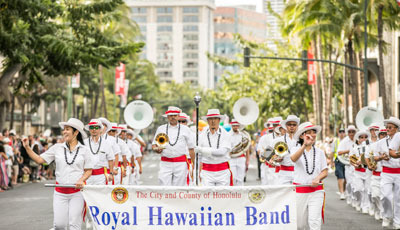
Photo courtesy of Honolulu Festival
The Honolulu Festival is an annual cultural event that celebrates the diverse cultures and traditions of the Asia-Pacific region, including Hawaii. Founded in 1995, the festival aims to promote mutual understanding, friendship, and economic cooperation among the participating countries. The event takes place in Honolulu, Oahu, usually in March.
The Honolulu Festival features various activities such as parades, performances, art exhibitions, workshops, and cultural demonstrations. Over the years, numerous artists and performance groups from different countries have participated in the festival, showcasing their unique cultures and traditions. Some of these groups include Japanese taiko drummers, Hawaiian hula dancers, and performers from various Pacific Island nations.
While it's difficult to pinpoint specific notable artists, as the event highlights cultural groups and performances, the festival has become a significant platform for sharing and appreciating the rich and diverse cultures of the Asia-Pacific region.
Be sure to check for updates to plan your visit and immerse yourself in the vibrant atmosphere of the Honolulu Festival, experiencing the art, music, dance, and culture of the Asia-Pacific region.
Honolulu Festival
Prince Lot Hula Festival

The Prince Lot Hula Festival is an annual event celebrating the rich tradition of hula and Hawaiian culture. Established in 1978, the festival is named in honor of Prince Lot Kapuāiwa, who later became King Kamehameha V and was known for his efforts to preserve and revive hula in the 19th century. The event takes place at the historic Moanalua Gardens in Honolulu, Oahu, usually in July.
The Prince Lot Hula Festival is considered the largest non-competitive hula event in Hawaii. It showcases both kahiko (ancient) and ʻauana (modern) hula styles performed by various hālau hula (hula schools) and their kumu hula (hula teachers).
While it is challenging to pinpoint specific "notable artists" as the festival emphasizes the hālau hula and their kumu hula rather than individual dancers, many distinguished hālau hula and their kumu have participated in the event over the years, highlighting the diverse expressions and styles of hula.
Be sure to check for updates to plan your visit and experience the beauty and depth of the hula tradition at the Prince Lot Hula Festival in the serene setting of Moanalua Gardens.
Prince Lot Hula Festival
Waikiki Ho'olaule'a
The Waikiki Ho'olaule'a was first organized in 1952 as part of the Aloha Festivals. The Waikiki Ho'olaule'a celebrates Hawaiian culture, music, dance, and food, showcasing the aloha spirit and the island's vibrant atmosphere.
The festival features multiple stages with live entertainment, including performances by various Hawaiian musicians, hula dancers, and cultural groups. Over the years, numerous local artists and performers have participated in the Waikiki Ho'olaule'a, making it a popular event among both residents and visitors.
The Waikiki Ho'olaule'a is typically held in September, in conjunction with the Aloha Festivals. Be sure to check for updates to plan your visit and enjoy the lively ambiance, delicious food, and captivating performances at the Waikiki Ho'olaule'a.
Waikiki Ho'olaule'a
Hawaiian Slack Key Festival
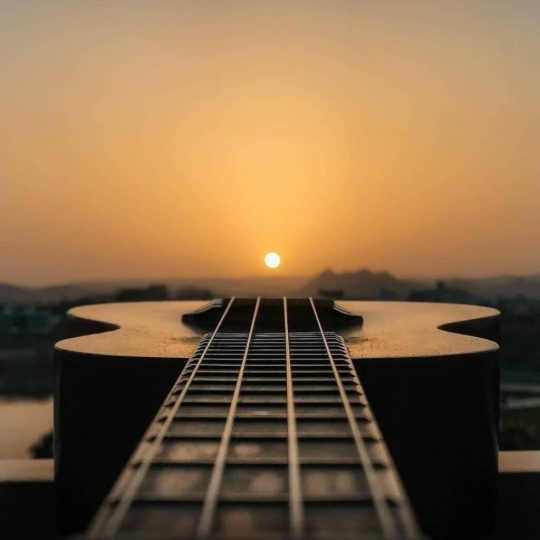
The Hawaiian Slack Key Festival is an annual event celebrating the slack key guitar, a unique and iconic Hawaiian musical tradition. Founded in 1982 by Milton Lau, the festival aims to preserve and promote slack key guitar music by featuring a wide array of talented musicians and artists.
Throughout its history, the Hawaiian Slack Key Festival has showcased numerous notable slack key guitarists, including Gabby Pahinui, Cyril Pahinui, Ledward Kaapana, Keola Beamer, and George Kahumoku Jr. The festival features live performances, workshops, and jam sessions, allowing attendees to appreciate the beauty and diversity of slack key guitar music.
The Hawaiian Slack Key Festival usually takes place in the fall, with the main event held in Honolulu, Oahu. Other smaller festivals are organized throughout the year on different Hawaiian islands.
Hawaiian Slack Key Festival
Final Thoughts On The Best Music Festivals In Hawaii
Creating this list was quite depressing, to be honest.
As I was doing my research I came across so many festivals that I remember growing up with that are now long gone. In fact some on this list still do not have their current year performance dates up and it makes me wonder if they are waiting till the last minute or maybe its the end.
I hope you all get out there and enjoy some music along with good food and great friends.
Read the full article
0 notes
Text
Pacific Floor Covering LLC in Honolulu, HI
The prominence of Oahu flooring companies service provider these days is noteworthy. Many homeowners want their homes with the best floor covering, too. Besides, business owners are open to changes in their interior design, specifically flooring detail. Pacific Floor Covering, LLC is one of the perfect companies to trust at present. The place is your most trusted flooring contractor in Honolulu location. In addition, they appreciate their customers, which is why they strive to exceed your expectations in everything they do. Basically, it all starts with their friendly and reliable flooring solutions. Lastly, you won’t be disappointed with their offers.
YouTube Channel
The Pacific Floor Covering LLC YouTube Channel in Honolulu, HI is interesting. It helps those who are looking for a dependable company to provide floor covering solutions. In addition, the company is headquartered in Honolulu, and has been providing professional old flooring removal and new flooring installation solutions since their opening in 2001. They are the undisputed experts when it comes to flooring needs. Besides, state and federal buildings, military posts, ballrooms, big box or retail stores, commercial or high-rise buildings, and hotel and resort properties have all trusted them to provide the highest quality of work when it comes to all of their flooring needs.
Honolulu, HI
Honolulu, HI location has an amazing economic progress nowadays. Aside from that, their economic background is exciting, too. The natural gateway to the islands' large tourism industry is Honolulu. It has the largest city and airport in the Hawaiian Islands that brings millions of visitors and contributes $10 billion annually to the local economy. In addition, the location of Honolulu in the Pacific also makes it a large business and trading hub, particularly between the East and the West. Aside from that, other important aspects of the city's economy include military defense, research and development, and manufacturing. Lastly, the Central Pacific Bank is situated in Hawaii.
youtube
Iolani Palace in Honolulu, HI
The Iolani Palace in Honolulu, HI is remarkably famous these days. In addition, it has a remarkably unique story. Since it is a well-known place, it is highly expected that many guests from other places go there. Basically, it was the royal residence of the rulers of the Kingdom of Hawaiʻi beginning with Kamehameha III under the Kamehameha Dynasty and ending with Queen Liliʻuokalani under the Kalākaua Dynasty. The latter was founded by her brother, King David Kalākaua. Besides, it is located in the capitol district of downtown Honolulu in the U.S. state of Hawaiʻi. Lastly, it is now a National Historic Landmark listed on the National Register of Historic Places.
Make a livable wage in Hawaii? Odds are you don’t
There are recent news reports in Honolulu, HI location that are noteworthy. It includes the making a livable wage in Hawaii. Reportedly, it is no surprise how expensive Hawaii is. It is so expensive from food costs, childcare, and medical to housing or transportation. When living in Hawaii, you can expect to pay more for basic needs. Living Wage, a website that calculates how much money is needed to live comfortably in a state or county, has information on what it would take to live in Honolulu County. Based on their calculations, a livable wage for a single person living in Honolulu would be $22.69 per hour or $47,195 per year before taxes.
Link to Map
Driving Direction
Iolani Palace
364 S King St, Honolulu, HI 96813, United States
Head northwest toward Richards St
154 ft
Turn right toward Richards St
Closed 6:00 PM – 6:00 AM
276 ft
Turn left onto Richards St
358 ft
Use the left 2 lanes to turn left onto S King St
1.6 mi
Turn right onto Kalākaua Ave
0.3 mi
Turn right onto Makaloa St
Destination will be on the right
157 ft
Pacific Floor Covering LLC
1670 Makaloa St #204-144,
Honolulu, HI 96814
#flooring company honolulu#honolulu flooring companies#flooring installation oahu#honolulu flooring installation#oahu flooring companies#flooring contractor honolulu
1 note
·
View note
Photo

A Moment In History: ACHIEVEMENTS OF KING KALĀKAUA, WHOSE IOLANI PALACE HAD ELECTRICITY BEFORE THE WHITE HOUSE…… - Hawaii 🌴☀️ (at Kailua-Kona, Hawaii) https://www.instagram.com/p/CjBPDU1JSXc/?igshid=NGJjMDIxMWI=
0 notes
Text
A bit of HI History
@HISTORY
On #ThisDayInHistory in 1959, Hawai’i became the 50th state. Ua Mau ke Ea o ka ʻĀina i ka Pono (“The life of the land is perpetuated in righteousness”).
8.21.22 • 9:00am • Twitter
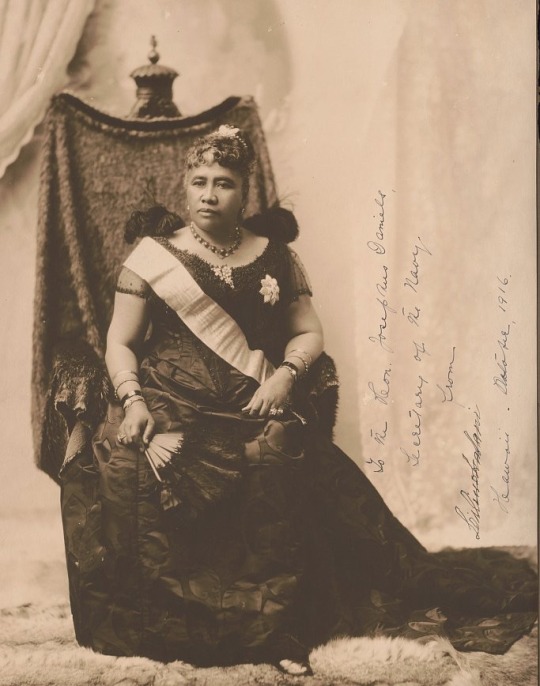

@librarycongress
A 🧵 for the 63rd anniversary of Hawai'i becoming the 50th U.S. state: This is Queen Lili'uokalani, Hawai'i's last monarch & a prolific song writer. Her most famous song, "Aloha oe," is an enduring favorite. She is said to have written several songs while held captive in 1895.👇
8.21.22 • 11:36am • Twitter
@librarycongress
The queen was imprisoned as a direct result of a years-long movement by American businessmen to annex Hawai'i. The group, backed by paramilitary, had forced her brother, King Kalākaua, to sign a constitution in 1887 that stripped the monarchy's power & voting rights from natives.
8.21.22 • 11:36am • Twitter


@librarycongress
After the king's 1891 death, one of Lili'uokalani's first initiatives as queen was to draft a constitution that would restore voting rights to Hawaiians & power to the monarchy. That's why she was removed from power and later imprisoned for about a year in 'Iolani Palace.
8.21.22 • 11:36am • Twitter
@librarycongress
The queen was released in 1896. Hawai'i became a U.S. territory in 1898. Lili'uokalani spent the rest of her days fighting for the rectification of wrongs done both to Hawai'i & to herself. She died in 1917, not long after this photo was taken.
Read more:
8.21.22 • 11:36am • Twitter
there has been so much injustice done on earth in its tragic History of men trying to rule the world. but there is still hope of all things being restored. the True Kingdom will come.
A personal note:
there have been many earthly kingdoms with princes and princesses and kings and queens, but what we are to see in this is that Heaven is Royalty and a True and pure Kingdom that has no end
the beautiful mystery of this is the princess becoming Bride as a pure Queen (chosen by Royalty) which is the Body of the Son (A new Adam) with the Church becoming as A new Eve and the Temple of the Spirit of Light on earth
for earth has chosen kings and queens, just as ancient King David who is still recognized as such in Heaven where he now resides, although under the Authority of the eternal King (of kings)
0 notes
Photo

Kaʻiulani (Hawaiian pronunciation: [kə'ʔi.u.'lɐni]; October 16, 1875 – March 6, 1899) was the only child of Princess Miriam Likelike, and the last heir apparent to the throne of the Hawaiian Kingdom. She was the niece of King Kalākaua and Queen Liliʻuokalani. After the death of her mother, Princess Kaʻiulani was sent to Europe at age 13 to complete her education under the guardianship of British businessman and Hawaiian sugar investor Theo H. Davies. She had not yet reached her eighteenth birthday when the 1893 overthrow of the Hawaiian Kingdom altered her life. The Provisional Government of Hawaii rejected pleas from both her father Archibald Scott Cleghorn, and provisional president Sanford B. Dole, to seat Kaʻiulani on the throne, conditional upon the abdication of Liliʻuokalani. The Queen thought the Kingdom's best chance at justice was to relinquish her power temporarily to the United States.
Davies and Kaʻiulani visited the United States to urge the Kingdom's restoration; she made speeches and public appearances denouncing the overthrow of her government and the injustice toward her people. While in Washington, D.C., she paid an informal visit to President Grover Cleveland and First Lady Frances Cleveland, but her efforts were in vain. The situation put both Kaʻiulani and her father in dire financial straits. Her annual government stipend ceased, and her father's income as a government employee came to an end. Father and daughter spent the years 1893–1897 drifting among the European aristocracy, relatives and family friends in England, Wales, Scotland and Paris, before finally returning to Hawaii.
After arriving back in Hawaii in 1897, Kaʻiulani settled into life as a private citizen and busied herself with social engagements. She and Liliʻuokalani boycotted the 1898 annexation ceremony and mourned the loss of Hawaiian independence. However, she later hosted the American congressional delegation in charge of formalizing the Hawaiian Organic Act. She suffered from chronic health problems throughout the 1890s and died at her home at ʻĀinahau in 1899.
53 notes
·
View notes